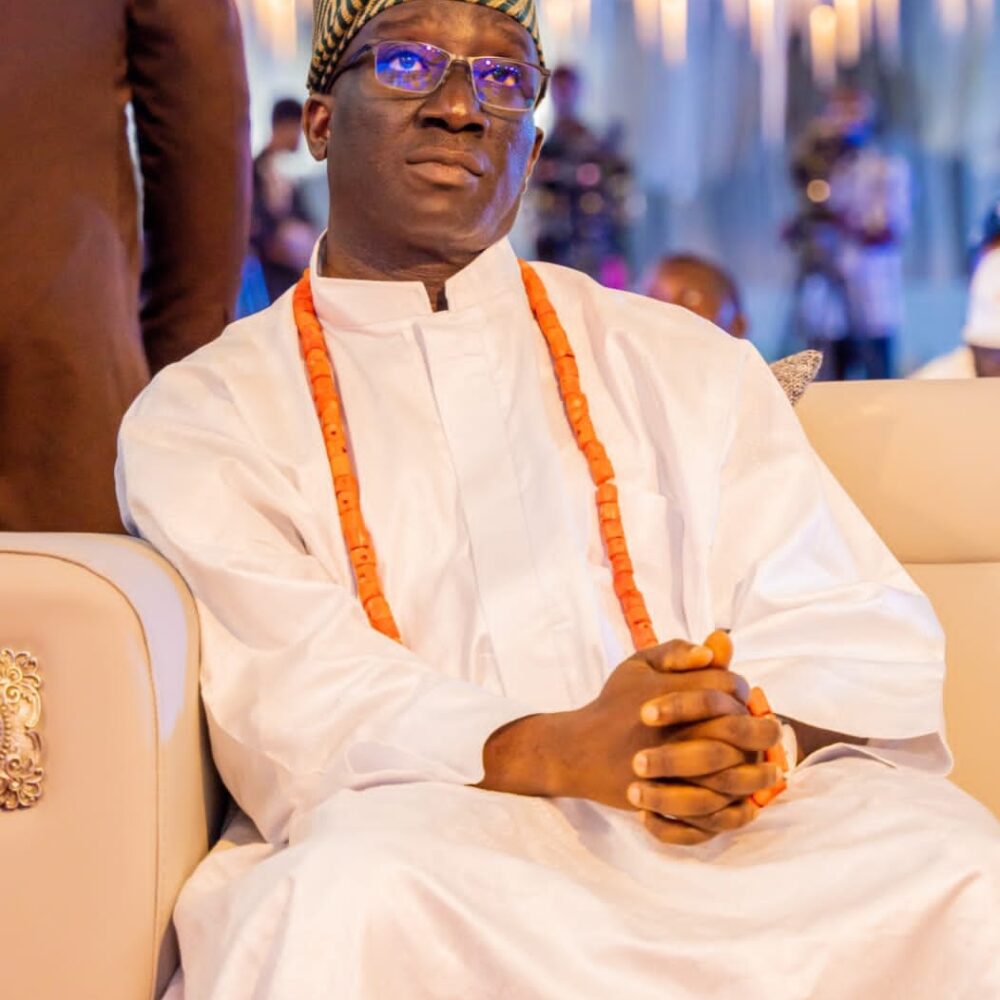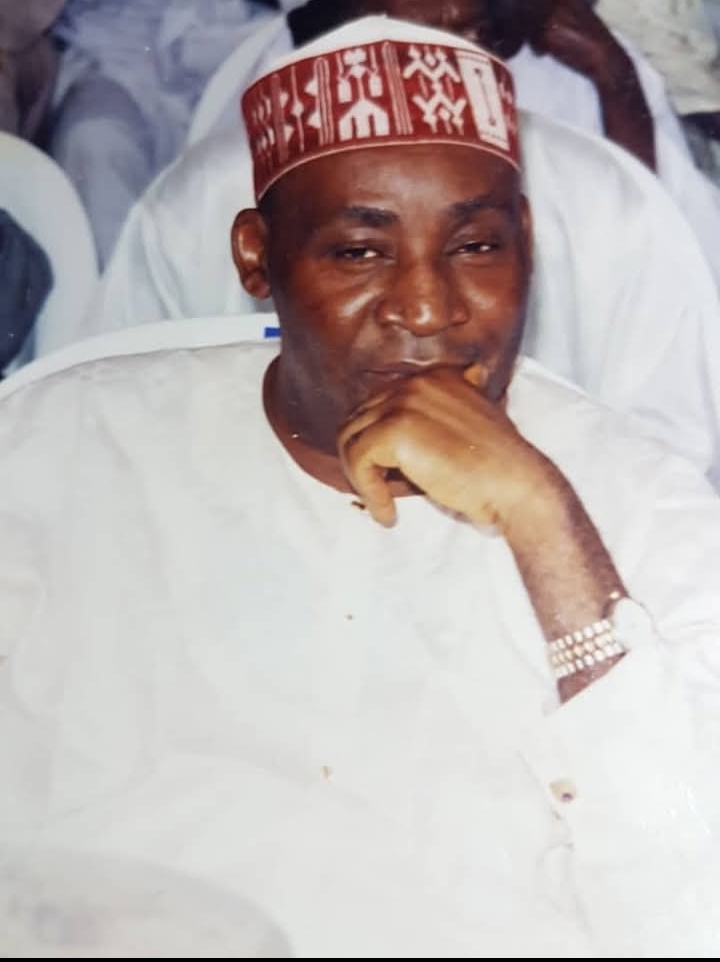Last week marked the 20th anniversary of the discovery of the torso of a young boy by the bank of River Thames in London. On September 21, 2001 to be precise, this dismembered body, found near Tower Bridge in Central London, United Kingdom, was putting on an orange-colour girls’ shorts. Paraphernalia of voodoo enveloped his remains. Sighted by an IT consultant, Aidan Minter, the Metropolitan Police immediately rallied its marine support unit to retrieve it but, 20 years after, the limbs and head are yet to be recovered.
This find wasn’t new. The Metropolitan Police dealt with such phenomenon periodically. On the average in London yearly, Met and the Coroner’s Court are said to have on their hands between forty and forty-five cases of bodies retrieved from Thames. Preliminary evidence pieced together by the police revealed that the torso was that of a male of between four and seven years old. Unable to put a tab on his real name, he was named Boy Adam, apparently after the biblical Adam, said to have been naked in the Garden of Eden, like the Thames torso.
After a thorough post-mortem, it was found out that Boy Adam had been poisoned and his throat slit clinically to drain it of blood. His other dismembered parts were then methodically hacked, in the manner of a professional butcher. Inside the boy’s stomach and bones were found traces of minerals. Flesh tissues also established that the boy might have been trafficked from Nigeria, via Germany, into the UK a few days before his murder. Sure that the case on their hands was voodoo sacrifice, investigators procured a lead from one Osagiede who was initially believed to have trafficked the boy. It later proved abortive.
A police source told me that a police pathologist, a retired Assistant Inspector General of Police, Dr Wilson Akhiwu, helped Scotland Yard in situating Boy Adam’s likely descent. Apart from forensic investigations and very comprehensive checks in Nigeria and Benin Republic, Met Police officers, in two decades, visited South Africa, Holland and Germany in search for leads into this highly shrouded murder on the soil of the UK. While the cause and motive for the murder of Boy Adam still remain unclear 20 years later, Metropolitan Police affirmed that an autopsy conducted on the body revealed that he died from a violent trauma to his neck region.
Still unable to get concrete links to the killing, the police went further down to South and Southern Africa, with Late President Nelson Mandela adding his voice to calls for assistance with information. The theory that drove Met there was that Boy Adam was trafficked to the UK for muti sacrifice. Muti is derived from a Zulu word called umuthi (tree) whose root is thi. Gruesome murders and mutilations are emblematic of Muti killings and they are done by excising body parts of their victims which are used as part of ingredients for concoctions of witchcraft.
Professor Hendrik Scholtz, while doing a review for The Guardian of UK in April, 2002, gave the modus operandi of Muti thus: “The victim may be a blood relative or one of their own children, but is never a stranger and definitely never an enemy. The child is not killed because they are angry with it. They are thankful to the child. The child is actually being sacrificed so that these people can have something of an advancement. It is to attain a goal that is unattainable by normal sacrifice (the sacrifice of an animal), whether that goal is prosperity or high political office.” Till today, with millions of British pounds spent on the investigation, the Met Police haven’t given up on unraveling this cruel murder.
“Forensics revealed that the little boy could have been five or six years old and was from Nigeria – it is believed he was trafficked into the UK, possibly via Germany. His head and limbs had been severed from his body which was clothed in a pair of orange shorts. The cause of death was declared as a violent trauma to the neck area. It is believed his death may have been a ritualistic killing,” said a Scotland Yard spokesperson only last week.
Boy Adam’s murder was almost as convoluted as investigations into the murder of controversial itinerant Islamic cleric, Alfa Bisiriyu Apalara. Born in same Itoko area of Abeokuta as Apala music legend, Ayinla Omowura, Alfa Apalara gathered adherents round him in Ebute-Metta, Lagos to whom he regularly preached against idol worshipping, singling out Egungun, Oro, Agemo and Awopa cults for verbal flagellation. Due to an earlier threat through an insignia of a Brotherhood cult a few days earlier, he had policemen standing guard while he preached. However, on January 3, 1953, at a preaching engagement in Oko Baba, a stronghold of cultists, he was attacked, dragged into a nearby house, killed and his corpse was reportedly never found. On May 26, 1954, eleven men were subsequently hanged for his murder.
In prehistoric time, human rituals and cannibalism were racial-blind. In his book entitled In Africa’s Forest And Jungle: Six Years Among The Yoruba, originally written around 1860, Richard Henry Stone related an encounter he had with Bishop Ajayi Crowther. The Introduction to this book, published in 2010 by The University of Alabama Press, was a long narrative of Stone’s “(missionary efforts) in Africa during the nineteenth century and (as) a representative of the Southern Baptist Convention (who) spent his years in Africa with the Yoruba-speaking people in what is now Western Nigeria (and) lived in Ijaye, (Stone himself called it Ejahyay) Abeokuta, and Lagos; and traveled to Ibadan, Lahlookpon (Lalupon), Ewo (Iwo), Ogbomishaw (Ogbomoso), and Oyo.”
In Africa’s Forest And Jungle, Stone narrated how Crowther, a young boy from Osogun, was captured at about 13 years by Fulani slave raiders and “on the night that he was taken prisoner, his father was killed and he had seized his bow and quiver and fought in his place until overpowered.” Crowther was then “captured and sold to the Portuguese by the slave-hunters” and sold multiply until he was purchased by Portuguese traders who intended to pawn him on the transatlantic market.
In later years, specifically in 1864, he was consecrated as first Black Bishop of the Anglican Church by Charles Longley, Archbishop of Canterbury, at the Canterbury Cathedral. The part of Stone’s encounter with Crowther that relates to this piece was that after his capture and on board a Portuguese slave-ship, alongside other captives, “they were told by the captain that the English had ships out looking for black people to eat…When he saw large pieces of meat hanging from the yard-arms of the Englishman’s ship and piles of cannon balls on the deck, his terror knew no bounds; for he thought that the balls were the heads of little darkeys like himself, and that their meat had been hung up to cool before being eaten.”
So many works have historicized cannibalism and human rituals in Africa. Milan Kalous’ Cannibals and Tongo Players of Sierra Leone gave an account of deadly cannibalism practice in Sierra Leone during the nineteenth and twentieth centuries by a set of people called “were-animals” notoriously labeled “human alligators,” “human leopards” and “human chimpanzees.” Their renown was capturing and ritually slaughtering their victims and harvesting their vital organs to make wealth-producing medicines. As Crowther’s personal testimony confirmed however, cannibalism isn’t strictly African as empirical documentation confirmed that during the trans-Atlantic trade, European cannibals were also on the prowl seeking the succulent fleshes of Africans to make delicacies.
Andre Donelha, a Cape Verdean, who travelled in Upper Guinea from 1574 to 1585, recalled how the Mane, invaders who operated during the first half of the sixteenth century, attacked the Western coast of Africa from the eastern flank and “(ate) human flesh at any time and while at war, even that which belongs to one of their own nation. When they make war, the conquerors eat the conquered.” In fact, the Manes were reputed to bear the grisly and cruel name of Sumbas which, translated, means “eaters of human flesh,” a practice which Walter Rodney explained was “for courage and ferocity.”
The other cannibalistic group in history was The Leopard Society. K. J. Beatty, in the Human Leopard Society: Ritual Murder and Cannibalism in Colonial Africa, tried to answer the question whether members of this cannibal society do this for the purpose of satisfying an appetite for human flesh or out of religious rites. In this historical account of cannibalism, Beatty found out that cannibals, like the Human Leopard Society, Human Alligator Society and the Human Baboon Society that are based in West-Africa, operated as underground secret organizations which were responsible for “weird rituals and murders, rumors of cannibalism and human sacrifice.” One of their modi operandi, explained the author, was that, “during the harvesting of human fat to replenish the energy of some primitive entity, the members of these groups came to believe in the reinvigorating effect of the human meat gourmet. Their morbid activities spanned decades and came to an end with the labors of the Special Commission Court, and the ensuing punishment of the perpetrators.”
With its domicile in West Africa in early to mid-20th century, Human Leopard, Alligator and Baboon Societies were dreaded secret societies originally active in Sierra Leone. They eventually spread to Liberia, Nigeria and Cote d’Ivoire. In Nigeria, it was predominant among the Efik of Calabar and bore the native name, Mforoekpe. Their appearance was in leopard skin dresses. At midnight, they waylaid travelers and were armed in sharp instruments that looked like a leopard’s teeth and claws. Once they succeeded in killing their prey, the Mforoekpe then cut the flesh into pieces which were then distributed to members of this dreaded secret society. Upon eating human flesh, members believed they were revitalized spiritually and physically while the entire Efik tribe received vitality thereby. Late Stephen Ellis in his The Mask of Anarchy: The Destruction of Liberia and the Religious Dimension of an African Civil War (1999 and 2006) wrote about the Leopard Society thus: “These were exclusive groups of people who were believed to be liable to possession by the spirits of carnivorous animals such as leopards and crocodiles, and who carried out ritual killings while in a state of possession. During the course of the twentieth century, the Liberian government outlawed these societies, but some of them nevertheless continued to function clandestinely…”
So many myths surround the Yoruba Ogboni secret cult, Sierra Leone’s ancient Mende and Temne chiefdoms’ Poro (men) and Sande (women) cults and the Liberian Vai people’s Mende-Temne Poro cult called Beri and the Sande’s Bundu. The Yoruba Ogboni society of the old Oyo Empire was a powerful cult notorious for its power to enthrone and dethrone traditional rulers, as well as powers that permeated Yoruba political organizations like the judiciary, governance among others. Last week, I cited Peter Morton-Williams’ anthropological study of this dreaded ancient Yoruba secret cult, entitled The Yoruba Ogboni cult in Oyo.
There are a plethora of metaphysical powers that initiates of blood, especially in fraternities and cults like Ogboni, wield and which entrap those in search of such authorities. Believing in the potent power of the Earth as a binding force, Ogboni use the edan (a twin object of a man and woman pegged on a cylindrical brass spare) in their lledi (shrine house) and sprinkles of blood to subtly encode obedience to rules and secrets. Not only does Ogboni ensure secrecy of affairs among its initiates, espirit-de-corps that is prized out of the initiates by blood oaths suborns potential squealers off revelations of Ogboni secrets.
Blood oaths, essential component of Ogboni cult rituals, are administered to safeguard secrets and ensure they do not leak to third parties. They were also to secure loyalty of one to another. Oaths also carve brotherhood where none exists. The Norwegian warrior, Orvar-Odd and the renowned Swedish warrior, Hjalmar’s blood oath is a case in point. Having fought for two days with no clear victor, they both decided to be sworn brothers by allowing their blood flow under a strand of turf raised by their spear. The blood was subsequently licked amid incantations and oath.
The Lydia, an Iron Age kingdom of Western Asia Minor, located east of ancient Ionia in the modern Turkish provinces of Manisa and inland İzmir, on their own, get embroiled in ceremonies where their arms are nicked with a sharp object and they thereafter licked the blood dripping from each other’s arms. The Scyths, ancient Iranian people of horse-riding nomadic pastoralists, who dominated the Pontic-Caspian steppe throughout Classical Antiquity, also allow their blood to drip into a glass cup which is later mixed with wine and drunk by the oath-takers. This act was also found among the Mongols and Chinese, as well as in the Balkan Peninsula during the Ottoman era.
Christianity and Islam have sought to wipe out blood oath, human sacrifice and cannibalism to no avail. The Ogboni itself was a recipient of this rout in 1948 in Oyo by Alaafin Raji Adeniran Adeyemi II, a pious Muslim monarch, who sought to delink the palace from ancient voodoo practices. Hitherto, the palace held a great link to and derived its existence from the immense powers of the Ogboni fraternity. Indeed, Oyomesi, the seven most powerful noblemen of imperial Oyo, who were principal advisors and sacred officiants of the Alaafin in charge of judicial and administrative functions of the empire, doubled as Alaafin’s ministers and Ogboni initiates.
Though a great attempt is made by the present cyber age to delink secret cults from the operations of society, they flower greatly among African elite, especially among power cabals who run to them for metaphysical shields at moments of existential turmoil and travails. Indeed, judges, politicians, lawyers and many leaders of societies are said to belong to these fraternal secret cults, all in the stampede for power and protection against inclement weathers of life. Pastors, Imams and many society leaders are said to be card-carrying members of the cult.
Fraternities, however, come with a great price. Fathers are reputed to have slept with their daughters as one of the conditions for such powers, while metaphysical offerings of beloved ones at covens are widespread. At the death of Ogboni lords, their corpses are requested by living initiates, allegedly with the brief to sever the hearts off their limp cavities. Such, many times, bring the dead initiates’ families in conflict with Ogboni elders, most of whom were always in the dark about the card-carrying membership of Ogboni fraternity by their departed ones. This was the lot of Yoruba music icon, Dauda Akanmu, alias Epo Akara. Epo had died February, 2005 of a kidney-related ailment and at his interment in Ibadan, opposite the shrine of leader of One Love Family, Guru Maharaj Ji, Islamic clerics, in amazement and helplessness, watched as Epo’s body was hijacked off them by advancing Ogboni. One thing led to the other and the body of great Awurebe music exponent, whose songs, laced with anecdotes, were arresting and didactic, was hurriedly heaved on the Lagos-Ibadan expressway as the security goons of an advancing convoy of then Governor Ayodele Fayose shot in the air.
The keen, persistent and unrelenting investigation of the Thames torso in the last 20 years reveals the abhorrence of saner countries for spillage of blood. Not Nigeria. The logic behind the keen pursuit of resolution of such knotty and criminal blood spillages in saner societies is that, being an impurity, all efforts must be made to gorge out any blood stain, no matter how long it will take, from the white apparel of their society. This is why you find in those sane countries that, though crime cases may take decades to be busted, they surely do. In Nigeria and many developing countries, however, the philosophy of impurity being an enemy of purity is not respected. There are so many innocent blood that have been spilled and society moves on as if nothing happened. Since the 2001 murder of Chief Bola Ige, Nigeria’s Attorney General, perceived to have been killed for the Nigerian state, we have harvested tomes of unresolved murders, with their files burnt or lost.
As much as human ritual sacrifices, blood oaths and cannibalism may not pass religious and moral tests, they are a reflection of the crossroads we find ourselves as Africans as they today litter the whole landscape. There are still many parts of Nigeria today where human flesh is cuisine, especially as requirement for money rituals. Newspapers are awash with them. As we get closer to the 2023 elections, this practice will increase as politicians seek spiritual buy-in into their ambitions which most times demand human sacrifices. Don’t we consider it a moral and spiritual equivocation that, for us to live, our fellow creations must die?





